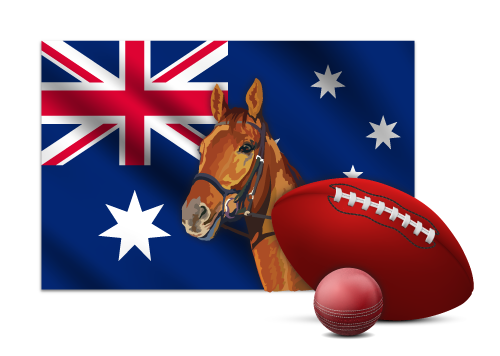 There are lots of contenders for “Most Sports-Obsessed Country in the World” among the various nations we have profiled and Australia is absolutely a contender. There are many stereotypes of Australians and – as with many stereotypes – they are based at least in part on truths: the fact is, Australians love sport.
There are lots of contenders for “Most Sports-Obsessed Country in the World” among the various nations we have profiled and Australia is absolutely a contender. There are many stereotypes of Australians and – as with many stereotypes – they are based at least in part on truths: the fact is, Australians love sport.
When it comes to playing, rather than merely watching, Australians are right up there with the top nations in the world. The nation isn’t immune to the impact of fast food, video games and sedentary jobs but when it comes to active participation in sport, Australia scores highly. Statistics from the Australian Bureau of Statistics (Aussies love does-what-it-says-on-the-tin names: see the Great Ocean Road or the Great Sandy Desert) showed that more than 20% of Australians aged 15 and upwards took part in “sport-related activities” at least three times a week in 2017.
Australia doesn’t really have a national sport, rather it has several! Their core sports, both in terms of watching and cultural importance, are cricket, both codes of rugby and Australian rules football. However, Basketball Australia reported that basketball was the second highest team participation sport in the country. Netball and many other sports are also hugely popular, although in terms of big sporting events in Australia neither of these events really have much to offer, certainly beyond the domestic scene.
As well as the core sports listed above, Oz also hosts world class sporting events in a number of other areas too. Aussies who love golf, tennis, Formula 1 and horse racing get the chance to see true stars of their sport in action and many of these events make both front and back page news in a nation where sport is a huge part of the national psyche.
Jump To: Horse Racing | Tennis | F1 Racing | Golf | Cricket | Rugby League | Rugby Union | Aussie Rules Football | Soccer
Australian Horse Racing

There are many iconic horse races around the world and the Melbourne Cup is up there with the Grand National, the Kentucky Derby and other huge events that capture the imagination of the wider public beyond your typical racing fan.
Melbourne Cup
Held on the first Tuesday in November the race dates back to 1861. That’s serious history in a country many would say was effectively founded in 1788! Nicknamed “the race that stops the nation”, the day of the race is actually a public holiday in the host state of Victoria (the Melbourne Cup is held at Flemington in the eponymous city).
The Melbourne Cup is very much like the Grand National in terms of its place in the hearts of the public and even people with no interest in racing will usually tune in and have a bet. Attending the race is a must if you ever get the chance.
Many moons ago as youngsters, we made the pilgrimage to Melbourne and were encouraged to down shots at 10am by our older hosts, locals who said such drinking was obligatory! Upon arriving at the course it soon became apparent that everyone else, many of whom were in fancy dress ranging from the bizarre to the hilarious, had followed the same ritual and a day of madness, and, so we’re told, amazing racing, ensued.
Returning to the formalities of the big race itself, the Melbourne Cup is the most lucrative handicap held over two-miles anywhere in the world. In 2019, there was A$8m (approximately £4m at time of writing) in prize money, around four times as much as for the Grand National. Around 100,000 people attend, with a record 122,736 in 2003, and this iconic flat race really is not to be missed and is arguably the biggest single sporting event in Australia.
Turnbull Stakes
Racing in Australia is, of course, about more than just the Melbourne Cup. That said, a number of the other massive races in the country are preparatory events for the Melbourne Cup itself. One such race is the Turnbull Stakes, a Group 1 race also held at Flemington. With A$500,000 up for grabs it is another lucrative contest and forms part of the Spring Racing Carnival.
Caulfield Cup
Another such contest is the Caulfield Cup, which in common with races as diverse as the Irish St Leger, the Doncaster Cup (in England) and the Japanese Tenno Sho, offers winners exemption from the ballot to enter the Melbourne Cup. This is a really rich contest, with A$5m up for grabs, and also boasts plenty of history too, dating back to 1879. Held at Caulfield Racecourse, also in Melbourne, over around a mile and a half, this is held in mid-October each year.
In common with all racing countries outside the UK, France and Ireland, it is flat racing which dominates in Australia. Indeed, in 2009 it was suggested that jumps racing might be banned but after changes were made to make it safer that threat was removed. That said, NH action is restricted to just a couple of states now, with only a small number of races held and none that constitute big occasions.
Other Racing Highlights
There are, though, a number of other significant flat races, with the list below just some of the racing highlights:
- Newmarket Handicap, 6f, Flemington
- Caulfield Guineas, 8f, Caulfield
- W.S. Cox Plate, 10f, Moonee Valley
- Doncaster Mile, 8f, Randwick
- The BMW (H E Tancred Stakes), 12f, Rosehill Gardens
- Australian Cup, 10f, Flemington
- Australian Derby, 12f, Randwick
- Golden Slipper Stakes, 6f, Rosehill Gardens
- George Ryder Stakes, 7.5f, Rosehill Gardens
- Victoria Derby, 12.5f, Flemington
- TJ Smith Stakes, 6f, Randwick
With Flemington and Caulfield in Melbourne, and Randwick and Rosehill Gardens in Sydney, it is obvious that these two major cities are the home of racing in Australia. Victoria in particular is probably the most important state for Australian horse racing and of course the Melbourne Cup is the jewel in its crown.
Harness Racing – “The Trots”
That said, racing does take place in a number of other states and there are many more meetings around the country. In addition to traditional horse racing, harness racing, known as “the trots”, is also popular in Australia. There are not far short of 100 harness racing tracks in the country, with almost 2,000 meetings held every year, showing the popularity of this version of racing.
Trotting doesn’t have the prestige or financial might of racing on the flat but remains much-loved by fans and the betting public. It uses Standardbred, as opposed to Thoroughbred, horses, to pull a two-wheeled cart on which the jockey, called a driver, sits. It can be quite the spectacle!
Tennis
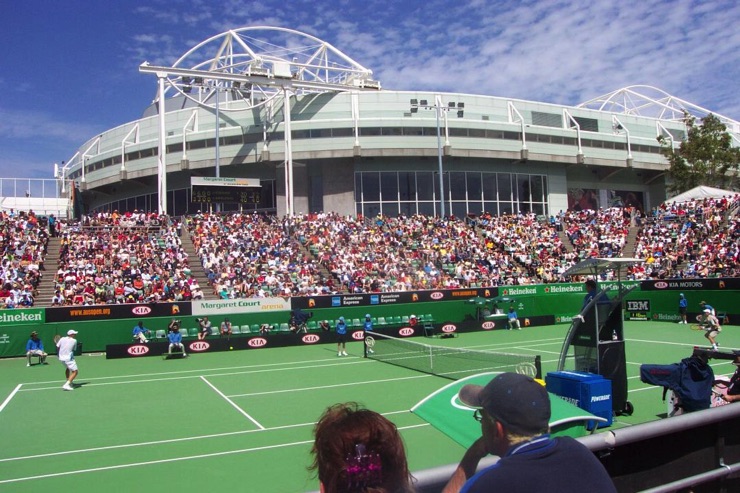
Australia has the honour of hosting the first Grand Slam of the tennis year and the Australian Open is a wonderful tournament and one of Australia’s true sporting highlights. Held in January and sometimes running until the start of February, the Australian Open was first played way back in 1905.
Australian Open
As with all the Slams both men and women compete and the total prize pool, including the various doubles events, is a mammoth A$71m. Whilst modern fans think of the Australian Open as a hard court tournament, synonymous with Melbourne, it has been, in fact, played on grass for the majority of its existence. Just as surprisingly, it has been hosted by Perth, Brisbane, Sydney and Adelaide, as well as Christchurch and Hastings, both in New Zealand (it was originally called the Australasian Championships).
It moved to Melbourne Park in 1988 and seems to have found a permanent home now. It is the best-attended Grand Slam in the game of tennis, with over 800,000 spectators watching live in 2020 and it is also claimed to be the biggest sporting event in the southern hemisphere. With huge prize money, bags of history, a passionate and abundant crowd and a roll of honour that includes just about all the best players from the annuls of the game, the Australian Open truly is a major sporting event.
ATP Tour
Tennis in ‘stralia isn’t just limited to two weeks in Melbourne though. Brisbane hosts a stop on the ATP Tour and simultaneously the WTA Tour, as does Sydney, both serving as warm-up tournaments for the big one. Both of these tournaments see many of the game’s top stars play, with, for example, Roger Federer and Andy Murray being past winners in Brisbane.
David Cup
In addition to these tour events, Australia also regularly hosts top level Davis Cup action and was home to the Hopman Cup until 2020. 2019 was the last edition of that event but 2020 saw the creation of the ATP Cup, played in Brisbane, Perth and Sydney, Serbia being crowned inaugural champions of the new men-only event (the Hopman Cup had been mixed).
F1 Kicks off in Melbourne
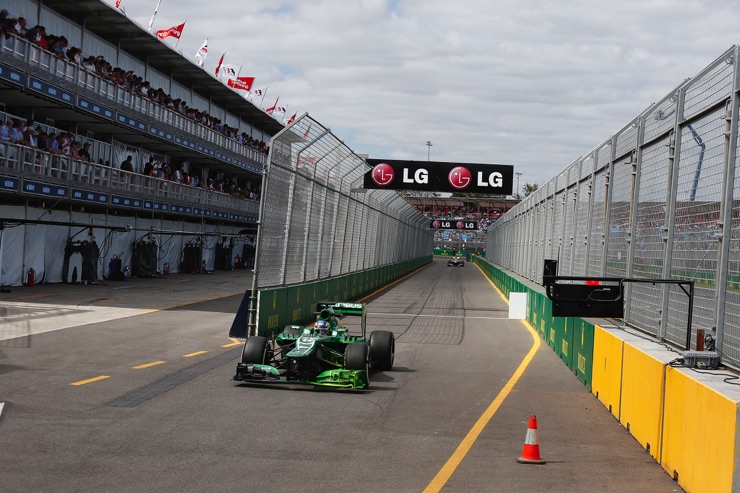
Melbourne is considered by many (at least many Melbournians, although to be fair it was crowned Sport City of the Decade) to be the number one sporting city in the world and it is a claim that has some merit. Just as the tennis Grand Slam schedule gets underway in the Victorian capital, so too does the Formula 1 roadshow.
The Australian Grand Prix was first held in 1928 and, again in common with the Australian Open, it was largely nomadic in its earlier years, despite its modern links to Melbourne. No Grand Prix has been held at more different venues that this race’s 23 and when it first entered the F1 World Championship in the mid-1980s it was held on a street circuit in Adelaide.
Whilst Adelaide played host it was traditionally the last race of the season, seeing great drama in 1986 and 1994. In 1986 Alain Prost won the Grand Prix to pip Nigel Mansell and Nelson Piquet to the title. Eight years later Mansell would win the race but it was Michael Schumacher who controversially took glory after his collision with title rival Damon Hill saw both men fail to finish.
On moving 450 miles south east to Melbourne, the race has typically been the curtain raising Grand Prix (aside from 2006 and 2010). Albert Park provides an iconic home for this brilliant sporting event and the street circuit often serves up great drama, befitting of the opening race of this globally loved sport.
Golf
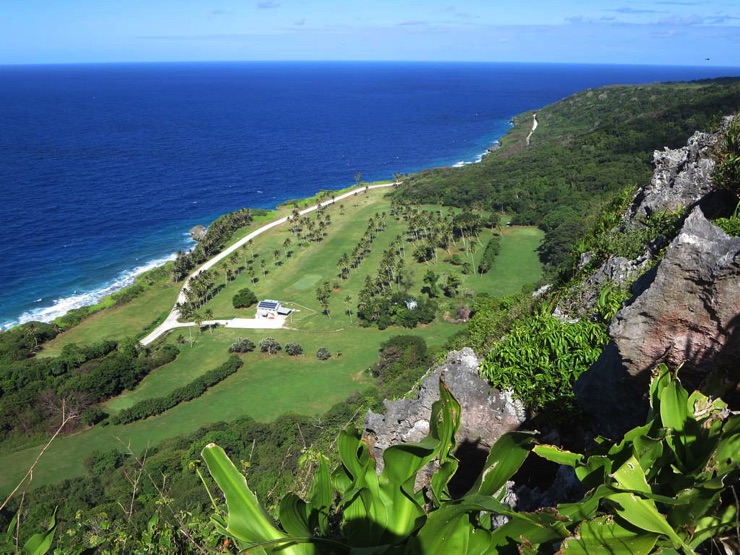
The PGA Tour of Australasia runs a large number of tournaments in Australia and other parts of the region. Some of the biggest and best of these are co-sanctioned by the European Tour and these tournaments are world class events and big sporting occasions.
The Australian PGA Championship is one of these and is typically held in December. Royal Pines in Queensland is the current home for this event but Royal Melbourne GC has hosted the event more times than any other course. The Victorian Open, or to use its full title as of 2019, the ISPS Handa Vic Open, is another co-sanctioned event. This is a relatively new addition to the tour and is part of golf’s efforts to modernise and attract new fans, operating under the slogan, “Men and women. On the same course. At the same time. For equal prize money.” The unique format has proved popular initially so hopefully this event will stand the test of time.
In 2019, Australia (Melbourne, where else?) hosted the Presidents Cup too, the third time Royal Melbourne had held this USA v Rest of the World Ryder Cup-equivalent. It is not currently scheduled to return to Australia but it surely will in due course.
In addition, there are some fans who wish to see major championship golf in Australia, arguing that the US being home to three out of four majors does not reflect the international status of the game. There has been talk of seeing the US PGA Championship, as it is now known, renamed and become a nomadic championship, or even of having a permanent major Down Under. Such talk remains very hypothetical for now though.
Cricket in Australia
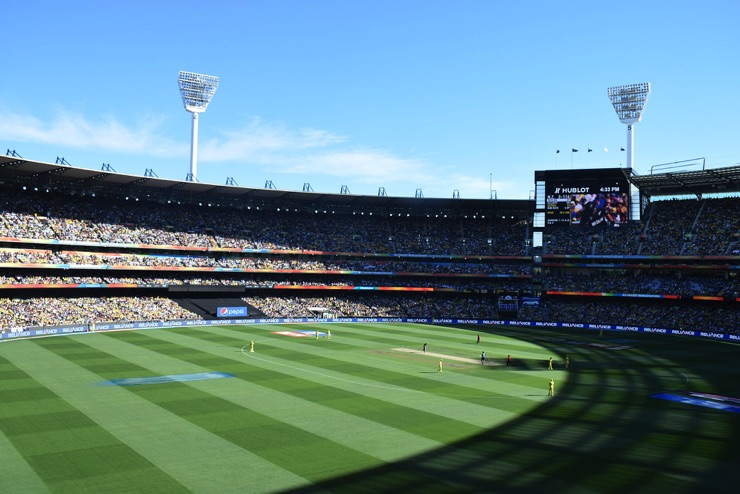
Cricket is widely played by both men and women in Australia and the national men’s team has dominated the different formats at various stages over the last 30 years or so. Cricket is a sport in which the international game is more important to most fans than their local side and the importance of the Baggy Greens to the national psyche was perfectly illustrated by the outrage created by the sandpaper ball tampering incident that took place in 2018.
Domestic
This dominated the front and back of newspapers for an extended period and caused a lot of soul-searching for many. Cricket means a lot to Australia and whilst the domestic competitions, chiefly the Sheffield Shield and T20-format Big Bash, attract big crowds, feature top stars and are well covered by the media, it is when Australia take to the field that we really see just what a big deal the sport is.
World Cups
Australia play in the World Cups in both T20 and ODI cricket and fittingly, for them, will host the T20 World Cup in 2020 (Melbourne will host the final!). They have never won this tournament so will be desperate to taste glory on home soil. In the 50-over format they have enjoyed unparalleled success though, winning the World Cup a record five times, three more victories than any other nation. They have co-hosted the tournament twice with NZ in 1992 and 2015 and we won’t even tell you where the final was on each occasion.
Test Games
For all that success, Test cricket remains hugely popular in Australia, with games against England arguably the pinnacle of the sport full stop, no matter what the format or competition. The Boxing Day Test (in Melbourne, naturally) is one of the biggest occasions in cricket and huge crowds (around 250,000 over five days in the Ashes, though almost 272,000 for the 2013 match) pack into the Melbourne Cricket Ground, creating a raucous atmosphere that truly is one of the biggest events in Australian sport.
Rugby League

If the Baggy Greens have dominated cricket World Cups, the Kangaroos, their footy (obviously we mean rugby league!) equivalent have turned the Rugby League World Cup into something of a procession. They have won 11 of the 15 World Cups to date, with only Great Britain and New Zealand being able to stop them. Moreover, Australia have made the final in all but one edition and have won every World Cup bar 2008 since losing to Great Britain in the 1972 final.
Australia have hosted the World Cup five times (jointly with NZ in 1968, 1977 and 2017), the most recent final taking place in… Brisbane! Queensland, of which Brisbane is the capital, is perhaps the heartland of rugby league, along with New South Wales, which probably explains why Melbourne was given the night off.
State of Origin Series
Indeed, much as Aussies love watching the Kangaroos thrash whoever has the misfortune to be facing them, perhaps the biggest game in the sport is the State of Origin series. This is played each year as a best-of-three contest between select XIIIs based on the state in which they first played senior rugby, usually but not always the one where they were born and raised, although the selection criteria have been tweaked a number of times over the years.
Known as Australian sport’s biggest rivalry, the games attract huge crowds in Sydney and Brisbane and even bigger ones on television both domestically and around the world. In 2013, each of the three games achieved higher viewing figures than any other event that year, perfectly illustrating what a major event this series of games is.
Club Rugby
Aside from the State of Origin, club rugby is also huge and is dominated by sides from the two aforementioned states, with 13 of the current 16 sides hailing from there. In fact, Sydney and surrounding suburbs are home to half of the entire league but the NRL also features a team from each of New Zealand, Canberra (ACT) and Victoria.
Rugby Union: Wallabies Unite

In terms of footy (rugby union this time), it is the national men’s team, the Wallabies, who are once again the biggest draw. Union is not quite as big in Australia as League but still receives huge media interest and attracts big crowds.
The Wallabies have won the World Cup twice, in 1991 and 1999, losing in the final in 2003 and 2015. Only South Africa and New Zealand (with three each) have won the Webb Ellis Cup more often. Australia also hosted the tournament in 2003, co-hosting with New Zealand in 1987.
International Super Rugby
The big club competition is the international Super Rugby, which sees four Aussie teams battle sides from NZ, SA and, as of the 2020 season, outfits from Argentina and Japan as well. This highly competitive league is considered to be the best club competition in the world and Australia is represented by the Queensland Reds, New South Wales Waratahs, Canberra-based Brumbies and the Melbourne Rebels.
Watching any of these sides, or of course the Wallabies, is a brilliant spectacle for fans of the 15-man code. When Australia play New Zealand, England, or the British and Irish Lions you will see a packed house and, most likely, a brutal and relentless game of rugby.
Aussie Rules OK?

Australian rules football (sorry, footy!), to those unfamiliar with it, can seem a rather strange game. Also going by the name AFL (from the Australian Football League, the principle competition and only pro league in the world), some people call it aerial ping pong, a reference to the frequent high, long kicks.
Play takes place on a large oval field, often a cricket pitch, between sides made up of 18 players, and to say it is a contact sport is a little like saying boxing is a contact sport. Aussie rules is very, very physical and the people that play at the highest level are supreme athletes.
We have included Australia rules football lower down our guide to sport in Australia because it is almost exclusively played in Australia. However, that is not to understate its popularity, with the AFL the richest governing body in Australia. Moreover, more fans watch AFL games than any other sport in Australia, so there is no doubting what massive occasions these games are.
The AFL is dominated by teams from Victoria, the game’s true heartland. Of the 18 current teams, 10 are from the state and when rivals like Collingwood and Carlton meet up sparks are sure to fly. Most of these teams play home games at the Melbourne Cricket Ground and that grand, huge stadium is also home to the final. Over 100,000 fans pack in for the game’s showpiece event and throughout the season the league averages in excess of 35,000 fans per game.
Soccer – Not Football
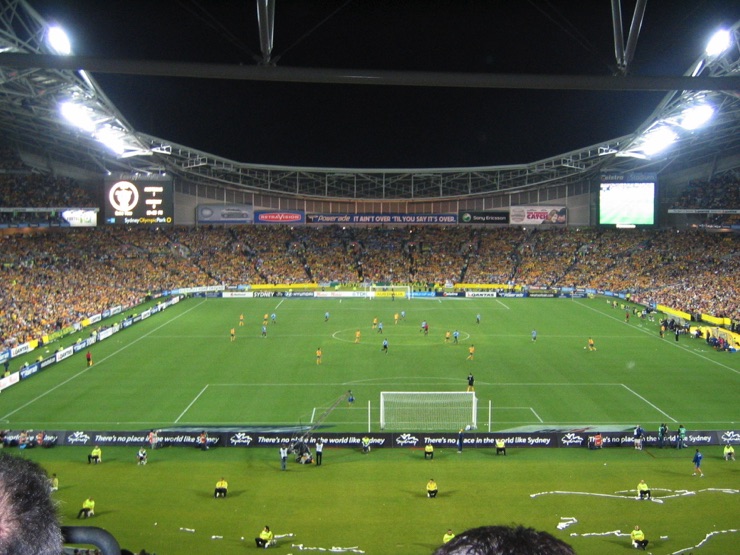
Just about the only game in Australia not called football is, well, football. As is the case in most sports-mad countries, soccer is very popular, and in particular leagues like the English Premier League and Spain’s La Liga.
Again in common with nations like the US, the standard and popularity of domestic soccer has increased in recent years and at junior level and in schools it is also very popular. The A-League has begun to attract some big (albeit often over the hill) names, with players such as Mario Jardel, Emile Heskey, William Gallas, Damien Duff, David Villa and Alessandro Del Piero having appeared this century.
The Socceroos
The National side, the Socceroos, are also very popular and Australia have had some top class players over the last 20 years or so. Since changes to the qualifying procedure they have been World Cup regulars, making the last 16 in 2006 and the Group Stage in every World Cup since.
Stars, such as Socceroos’ leading goalscorer, Tim Cahill, Harry Kewell, Mark Viduka, and goalkeepers, Mark Bosnich and Mark Schwarzer, have been regulars at top Premier League sides and helped grow the sport domestically.